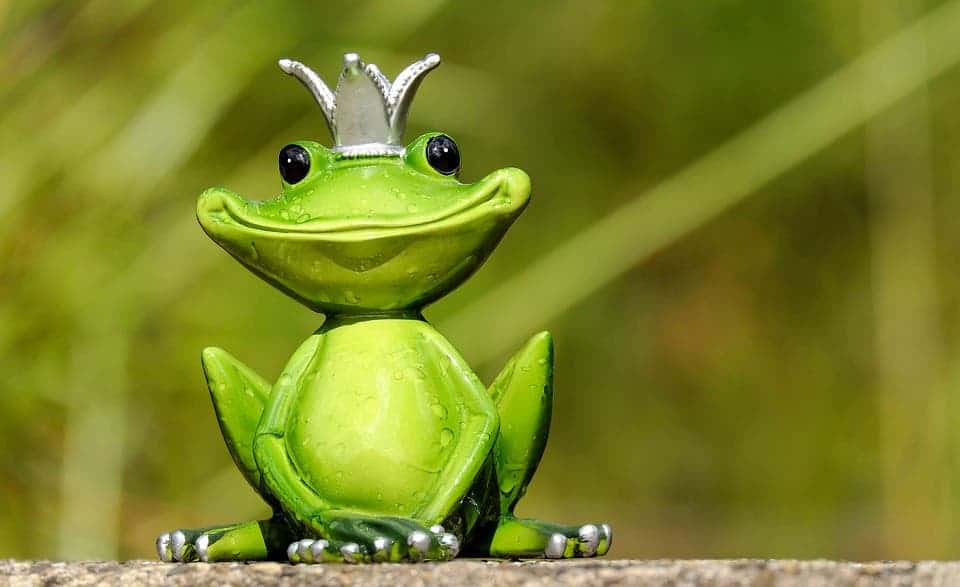Frogs are amazing creatures which have been around for 200 million years. However, it wasn’t until the fall of all non-avian dinosaurs some 65 million years ago, when a massive asteroid strike obliterated three-fourths of life on Earth, that frogs really kicked it into high gear.

An international team of researchers investigated a core set of 95 nuclear genes from 156 frog species, which, along with previously published genetic data on an additional 145 species, produced the most comprehensive frog evolutionary tree, or phylogeny, to date. The tree represents all 55 known families of frogs and generates a new timeline of frog evolution which shows three major lineages of modern frogs — representing 88% of living species — appeared right on the heels of the dinosaurs extinction rather than during a more ancient origin event, as suggested previously.
“This finding was totally unexpected,” said study co-author David Blackburn, associate curator of amphibians and reptiles at the Florida Museum of Natural History on the University of Florida campus.
The explosion in frog diversity, in itself, can be explained by die off of countless animal and plant species which left many ecological niches empty — and the amphibians gladly moved in. They had all the right qualities to boot. Today, there are more than 6,700 described species of frogs, representing one of the most diverse groups of vertebrates
“We think there were massive alterations of ecosystems at that time, including the widespread destruction of forests,” he said in a statement. “But frogs are pretty good at eking out a living in microhabitats, and as forests and tropical ecosystems rebounded, they quickly took advantage of those new ecological opportunities.”


To calculate the age for each frog lineage, the researchers translated genetic differences with the help of fossil records to find the dates at which species likely diverged from one another. This is how the team eventually ended up with a simultaneous evolution of the three major frog clades: Hyloidea, Microhylidae, and Natatanura. Initially, these findings were met with classic sciency ‘roll-eye’ skepticism by the team itself but it soon became clear their data was solid seeing how the signal persisted.
What’s more, zooming out of the lab for a grander view of the whole planet and its ecosystems, the findings make perfect sense seeing how very distantly related frog species resemble each other so much. The simultaneous evolution of major frog clades explains this conundrum nicely.
“Looking at bird or mammal phylogenies, we can see a reflection of Earth’s history—its climatic and geologic events,” Blackbun said. “You’d expect these major events—mass extinction and the breakup of continents—would have impact on frog evolution and that divergences between major lineages would relate to those in some respect. We see that in this phylogeny.”
The new frog lineages not only served to replace what was broken by the dinosaur extinction event; these also moved over the niches belonging to frogs from more ancient families. With the notable exception of a handful of species, all North American frogs can trace their roots to the post-dinosaur pioneers who had diverged. “If you could travel back to the time of T. rex in North America, there would be frogs, but the chorus you would hear at night would have been nothing like you’d hear today. They’re not even the same families,” Blackburn added.
The frogs also experimented heavily — there was ample room for it, after all. Before the dinosaur extinction, no frog lived in trees. But following the asteroid impact, seed-bearing trees and other flowering plants suddenly dominated the landscape and now all three lineages contain tree-dwelling frogs. Around this time, new frog species started laying eggs on the ground directly skipping the tadpole phase. This trait is today found in about half of all frog species.
Frogs have seen a lot of stuff on this planet. They were here when the supercontinent Pangea broke up about 200 million years ago or when Gondwana split into South America and Africa. The data from the present study indicates that frogs leaped across Antarctica, which was yet encased in ice sheets — it was quite tropically pleasant — to arrive from South America to Australia.
“I think the most exciting thing about our study is that we show that frogs are such a strong animal group. They survived from the mass extinction that completely erased dinosaurs and boomed back quickly,” Blackburn said. “However, frog species are declining nowadays because humans are destroying their habitats. Does that mean humans are making a huge extinction event even stronger than this one? We need to think about it.”
Journal reference: Yan-Jie Feng el al., “Phylogenomics reveals rapid, simultaneous diversification of three major clades of Gondwanan frogs at the Cretaceous–Paleogene boundary,” PNAS (2017). www.pnas.org/cgi/doi/10.1073/pnas.1704632114






